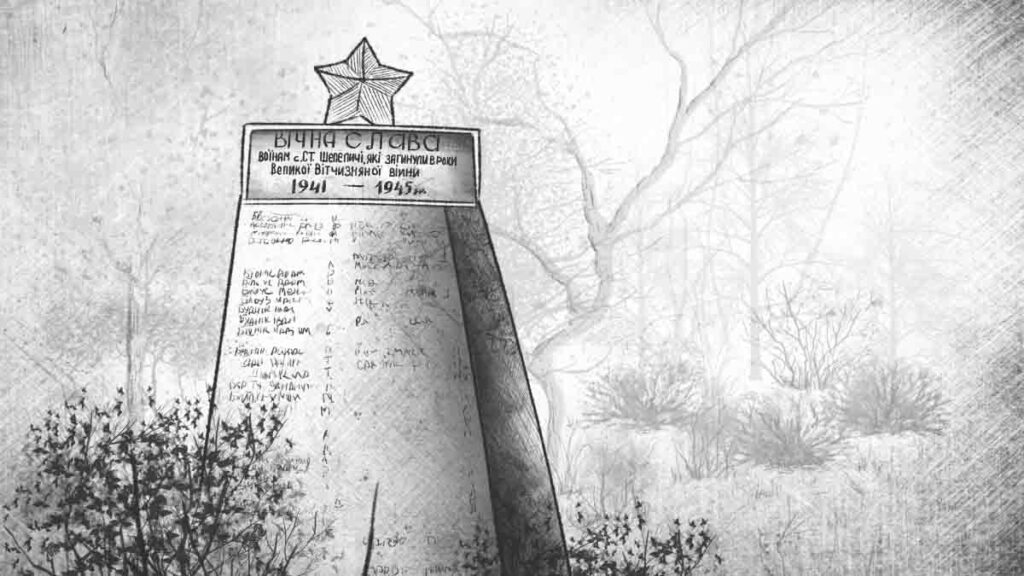
On April 26, 1986, the largest man-made accident in the history of mankind took place in Chernobyl. The fourth reactor of the Chernobyl nuclear power plant exploded. The total radiation of the isotopes released into the air was 50 million curies. It’s a lethal dose for all life on earth. The explosion and extinguishing the fire, which lasted about 10 days, killed 31 people. More than 200 were hospitalized. According to unofficial statistics, at least 15 thousand people died in Ukraine, affected by radiation sickness of varying severity.
This tragic sheet of the calendar in Ukrainian history was turned over at the cost of numerous victims. However, the memories of the technogenic tragedy still do not leave participants directly involved in it. Among them is the former head of the pharmacy of the medical service of the Lviv regiment of the National Guard Nadezhda Zakharko. In the spring of 1986, she was a medical instructor in a rifle company of the 10th motorized rifle regiment of the USSR Ministry of Internal Affairs. She saved the lives of firefighters and liquidators.
The military medical instructor recalls the liquidation of the accident at the Chernobyl nuclear power plant:
Nadezhda Zakharko says: “On Monday, April 28, 1986, there was a usual divorce for classes on the parade ground of our unit. The report of the officer on duty interrupted this process. They briefly announced the accident at the Chernobyl nuclear power plant. At about noon, the entire regiment was sent in two echelons to the crash site. Nobody knew what actually happened and what awaited us. It seemed to most of the soldiers that this was just another exercise. Only the duty service and maintenance workers remained in the unit.
I, the medical instructor of the 4th rifle company, expected to be in the swing of things. Indeed, on May 8, my colleague, medical instructor Oksana Bodlak, and other doctors went to provide assistance to the personnel. We didn’t know what to expect, so we thought that everything would cost the burns and injuries typical of the accident. However, certainly not what we had to face in real life.
Silence and inappropriately boarded up windows
The first thing that I saw was the deserted Pripyat and the same deserted villages located in the suburbs. The streets were hot and suspiciously quiet. We did not hear children’s voices or birdsong. It resembled a scene of a play that had not yet begun: there are sets, but no actors. A riot of blossoming gardens, cheerful facades of houses, and so inappropriately boarded up windows …
The personnel of our unit were placed in tents in the depths of the Polissya forests. The soldiers immediately began to complain of metal taste in their mouths, nausea, weakness, lack of appetite and headaches. It seemed to them that their clothes were adhering to the skin. The head of the medical service of our regiment, Captain Alexander Skakun, did not know what to treat, and most importantly, how? Despite strict observance of sanitary standards, the soldiers suffered from severe indigestion and peeling of the skin …
Oksana Bodlak and I were assigned to military unit 3217 in Kiev. Together with the therapist Kovalik S.A. we toured the villages closest to Chernobyl. They were Maksimovichi, Dityatki, Rossokha, Ivankovo. We participated in the process of evacuation of rural children from the 30 km of the Chernobyl zone. Also, we were in Chernobyl itself, more precisely, in the pioneer camp “Skazochny”. Our servicemen were accommodated there.
It was hard to see the sad eyes of the evacuated children, literally pierced with a silent cry for help. Even men couldn’t look at it. Military men! However, they had to adhere to orders and maintain order during the evacuation, despite their emotions.
… I longed to live, to live in spite of everything, to live like no one else had. Just to live…
Our task in the field team was to collect and analyze blood for the presence of white blood cells. We paid special attention to those who had symptoms of acute radiation sickness. Some military personnel were found to have a level of radioactive damage to more than 25 rem. We thought that this was an acceptable norm. Only much later, in July, we learned that such dose was practically fatal. The main problem was that we didn’t know until the end. This kept in even greater tension …
Those who were in the very epicenter of the disaster were in the radiation department of the Central Military Hospital in Kiev. We provided assistance to the firefighters who extinguished the fourth power unit of the ChNPP. We called them “white suicide bombers”. As it became known later, none of them survived. Looking at them, I longed to live. To live in spite of everything, to live like no one has lived. Just to live…”.
… Twenty-four years have passed since those terrible days. Nadezhda Mironovna tries not to remember Chernobyl, but diseases remind of it. The first surgery to remove a thyroid cyst was successful on 28 August 1986. Since then, every two or three years, this fragile woman goes to the hospital with some kind of complication. But the school of life, experience, the desire to live, which she acquired in the epicenter of a radiation disaster, do not allow her to break down.